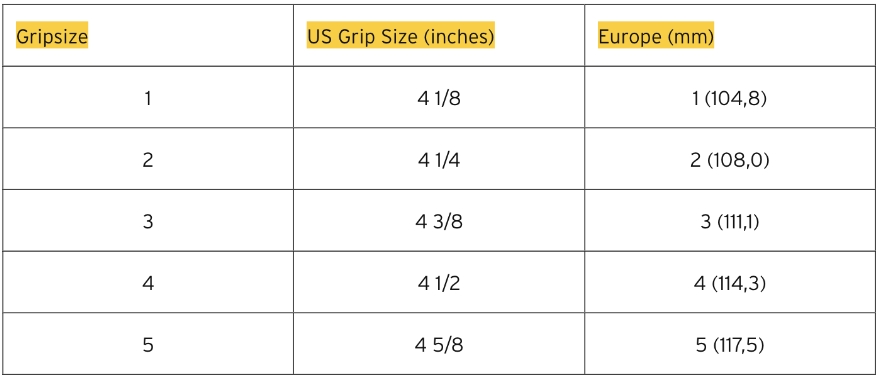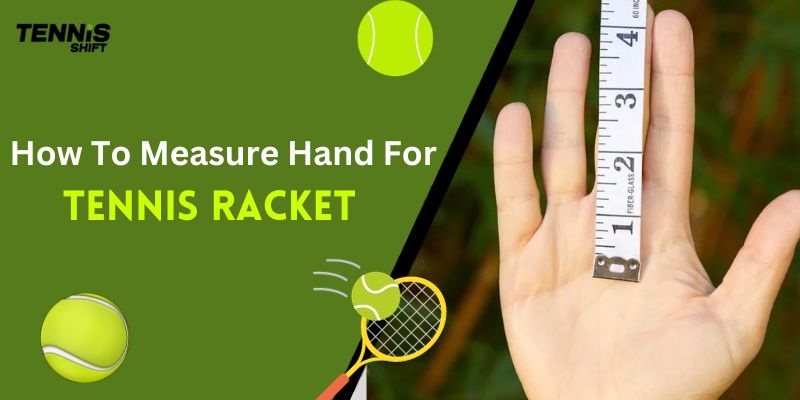Choosing the right tennis racket might seem like a simple task, but it’s a crucial one for any tennis player, whether you’re a beginner or a seasoned pro. One of the fundamental steps in finding your perfect racket is measuring your hand.
To measure your hand for a racket, stand upright and use a flexible measuring tape to measure from the middle crease of your palm to the tip of your ring finger. This measurement in inches will determine the appropriate tennis grip size, crucial for comfortable and controlled racket handling.
Now, we’ll guide you through the process of how to measure your hand for a tennis racket so that you can choose one that suits you like a well-fitted glove.
Why the Right Tennis Racquet Grip Size Matters
Selecting the right tennis racquet size is vital for your game. It’s not just about looks; it has a real impact.
- The right size enhances control. Imagine handling an oversized racket; it’s like using a sledgehammer for precision work. Conversely, a smaller racket limits your range.
- Power is another key. A proper size lets you generate power and maintain control. Balance matters for efficient energy transfer.
- Comfort is crucial. A wrong fit strains muscles and risks injury.
- Confidence in your racket boosts focus and enjoyment. Trust in your choice matters.
- Now, let’s measure our hands accurately for the perfect fit.
Measuring Your Grip Size for a Tennis Racket – Right Grip Size
When it comes to selecting the perfect racket, your hand size is a critical factor that can significantly impact your game and comfort.
1. Measuring Your Hand
To measure your hand for a tennis racket, follow these steps:
Length Measurement: Extend your dominant hand with fingers spread, and measure from the tip of your ring finger to the bottom lateral crease of your palm.
Width Measurement: Measure the width of your palm at its widest part, near the base of your fingers.
2. Consider Wrist Flexibility and Strength
Take into account your wrist mobility and strength when choosing a racket. Limited wrist mobility may require a lighter and more flexible racket for better maneuverability.
3. Factor in Injuries and Conditions
Consider any previous injuries or conditions that may affect your racket choice. Seek advice from a professional coach or expert for personalized recommendations.
If your finger struggles to fit in the space, the grip is too small for your hand. Conversely, if you can easily slide a finger between your fingers and thumb with ample space remaining, it indicates that the grip is too big.
4. Choose a Slightly Larger OverGrip
When in doubt, opt for a slightly larger grip size. You can customize it with overgrips or padding if needed.
5. Avoid Common Measurement Mistakes
Be cautious of gripping too tightly during measurements and relying solely on online sizing charts. Personal preferences vary, so trying out different rackets is essential.
6. Testing Rackets
Experiment with various sizes by testing rackets at local sports stores or borrowing from friends.
Finding the right-sized tennis racket is essential for optimizing your performance on the court and preventing unnecessary discomfort or injury
Other Factors to Consider When Choosing a Tennis Racket
When picking the ideal racket, more than just hand size matters. Consider these essential factors:
1. Weight
- Lighter rackets offer maneuverability and control.
- Heavier ones generate more power.
- Find a balance that suits your playing style.
2. Head Size
- Larger heads have bigger sweet spots for powerful shots, great for beginners.
- Smaller heads provide precision and control, favored by advanced players.
3. Grip Size
- The right grip size ensures comfort and control.
- Too small causes discomfort; too large affects maneuverability.
4. Frame Flexibility
- Stiffer rackets deliver power but may strain the arm.
- Flexible ones absorb shock but might reduce power.
5. Skill Level
- Beginners benefit from larger head sizes.
- Advanced players may prefer specialized rackets for specific techniques.
By considering these factors alongside proper hand size measurement, you’ll discover a racket that perfectly matches your physical attributes and playing style.

Common Mistakes to Avoid When Measuring for a Tennis Racket
When it comes to measuring for tennis, there are some common mistakes that players often make. Avoiding these mistakes can help ensure that you choose the right size racket for your hand and playing style.
1. Relying Solely on Age or Height Recommendations
- Use them as starting points, but don’t depend solely on them.
- Individual body proportions vary; measure your hand for accuracy.
2. Neglecting Grip Size
- Grip size impacts comfort and control.
- Ensure it suits your hand without being too tight or too loose.
3. Incorrect Hand Measurement
- Measure from the wrist crease to the ring fingertip for accuracy.
- This measurement guides you to the right grip size.
4. Skipping Racket Testing
- Measuring alone might not reveal comfort.
- Try different rackets to find the perfect fit for your hand and playing style.
By avoiding these missteps, you’ll increase your chances of finding the ideal tennis racket that matches your hand measurements and playing preferences perfectly!
Conclusion
In conclusion, finding the right tennis racket size is crucial for your game. By accurately measuring your hand and considering factors like grip size, weight, and head size, you can enhance your performance on the court.
Remember not to rely solely on age or height recommendations, as individual preferences vary. And don’t forget to try out different rackets to find the perfect fit that feels just right for you. So, go ahead, measure your hand, choose wisely, and enjoy playing your best tennis!
FAQs
How do you size yourself for a tennis racket?
To size yourself for a racket, measure your hand. Extend your dominant hand, measure from the tip of your ring finger to the bottom crease of your palm for length, and assess the width near your fingers’ base. These measurements guide your choice.
How to measure your tennis grip size?
To measure your grip size, use a ruler or tape measure. Measure the distance from your wrist crease to the tip of your ring finger. This measurement helps determine the appropriate grip size.
How do I know what size tennis racket to buy for beginners?
Beginners often benefit from rackets with larger heads. These provide a forgiving sweet spot, making it easier to hit powerful shots even with less consistent technique.
How should a tennis racket feel in your hand?
A racket should feel comfortable and balanced in your hand. It should allow you to maintain a relaxed grip while providing control, power, and maneuverability.
How tight should I hold my tennis racket?
Hold your racket with a firm but not overly tight grip. Your fingers should be relaxed enough to allow quick adjustments during play while maintaining control.
Why does my hand hurt when I play tennis?
Hand pain in tennis can result from gripping the racket too tightly or using a racket with an incorrect grip size. It can also be due to poor technique or overuse. Proper sizing, grip, and technique can help alleviate hand discomfort.
